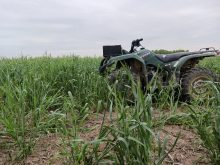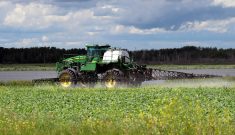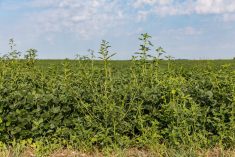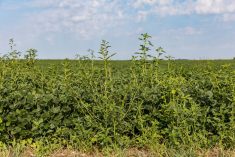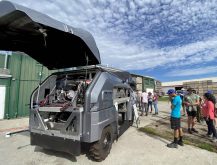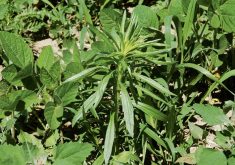Waterhemp with resistance to multiple herbicide groups continues to spread across the province, in part because of its similarity to other pigweed species.
First detected in Lambton County in 2002, the Ontario Ministry of Agriculture, Food and Rural Affairs (OMAFRA) describes common waterhemp as “extremely difficult” to identify. Grain Farmers of Ontario (GFO) also describes it as a “highly adaptive species” which, combined with a high seed production rate, consistently spreads to new counties.
Yield losses from the prolific pest can be significant. But although resistance to herbicides is an acute problem, control is not impossible.
Read Also
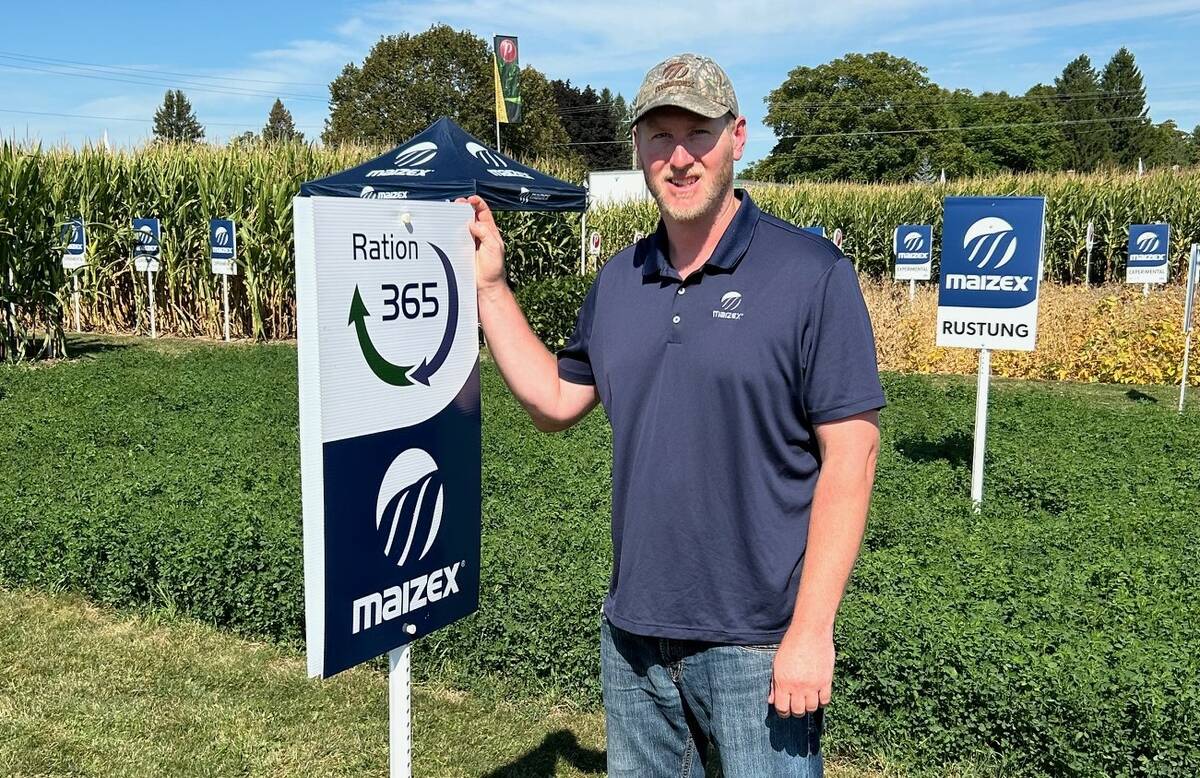
Maizex brings Elite forage seeds under its brand umbrella
The seed catalogue for Maizex Seeds takes on a different look for its 2026 edition thanks to the introduction of a new marketing initiative dubbed “Ration 365.”
Why it matters: Waterhemp can have significant impact on yield and continues to quickly adapt to a variety of herbicide groups.
Common waterhemp is an annual weed that produces male and female plants. Female plants produce seed for reproduction. As a member of the pigweed family, it can easily be mistaken for close relatives such as redroot pigweed. This is particularly true in early stages of growth.
Characteristics of common waterhemp include:
- Narrow leaves with a waxy surface
- Narrow leaf margins
- Green to purple and red stems
- Completely or nearly hairless stalks
- Very long seed heads (when plants are large)
Mature plants are also taller than other pigweed species, growing from 1.5 to 2.5 metres (4.5 to 7.5 feet) in height. Stem colouration ranges from green to purple and red. A spring 2021 Agronomy Alert from GFO adds male and female plants look like completely different weed species when mature.
Mike Cowbrough, field crop weed management specialist with OMAFRA, details best herbicide application practices for corn, soybeans and cereals in a May 3, 2022, Field Crop News update.
He says for corn and soybeans, a two-pass herbicide program achieves best control, with the first pass including a pre-emergence soil applied herbicide and the second a post-emergent herbicide.
Consistency of waterhemp control with soil applied herbicides varies. Cowbrough says growers should not expect perfect control for the entire season. However, a soil applied herbicide will eliminate most early seedlings, reducing the chances for larger and less susceptible seedling plants to be present during a second herbicide application.
Overall, Ontario data indicates winter cereals are a good rotational crop for reducing waterhemp populations. Cowbrough says a limited amount of cereal-specific research has been completed in the province, primarily because waterhemp has not been a problem in winter wheat to date.
This could be, in part, because fall seeded winter wheat tends to out-compete spring emerging summer annuals like waterhemp and other pigweed species.
Cover crops and tillage can be effective tools, particularly given the presence of populations with multiple herbicide resistances.
Data from Illinois shows fall seeded cereal rye, when crimped prior to planting soybeans, consistently reduced biomass of waterhemp over a three-year period. However, the thick residue left by the cereal rye can pose problems for soybean stand and establishment, making residue management at planting important (e.g. through row cleaning or strip tillage).
GFO adds oats, or a blend of oats and radish, are also potential alternatives. Depending on the cover crop used and level of growth, mowing or clipping may be required.
Waterhemp emergence is greater in no-till cropping systems. Research from Iowa has demonstrated the duration of waterhemp emergence was 26 days longer in a no-till cropping system compared to one employing a chisel-plough.
Isolating waterhemp-contaminated fields can also reduce the weed’s overall impact. This can involve restricting equipment movement, thoroughly cleaning equipment and actively testing for herbicide resistance when resistance is suspected.

Where is resistant waterhemp in Ontario?
Essex, Bruce, Glengarry: these counties mark the known boundaries of herbicide-resistant common waterhemp. Severity of herbicide resistance varies by region (see above). The following are confirmed resistances as of mid-May, 2022:
Group 2, 5, 9, 14, 27
- Essex, Chatham-Kent, Lambton, Middlesex
Group 2, 9, 14, 27
- Elgin, Northumberland, Stormont, Dundas and Glengarry
Group 2, 5, 9, 14
- Huron, Bruce, Haldiman, Leeds and Grenville
Group 2, 9, 14
- Wellington, Norfolk
Group 2, 5, 9
- Hamilton
Group 2, 9
- Brant
Herbicide resistance identification programs are ongoing. Sample kits and directions are available through OMAFRA. The University of Guelph also offers a free tissue sample service.




